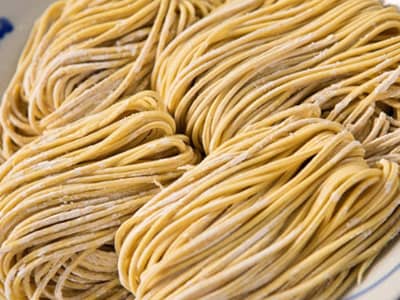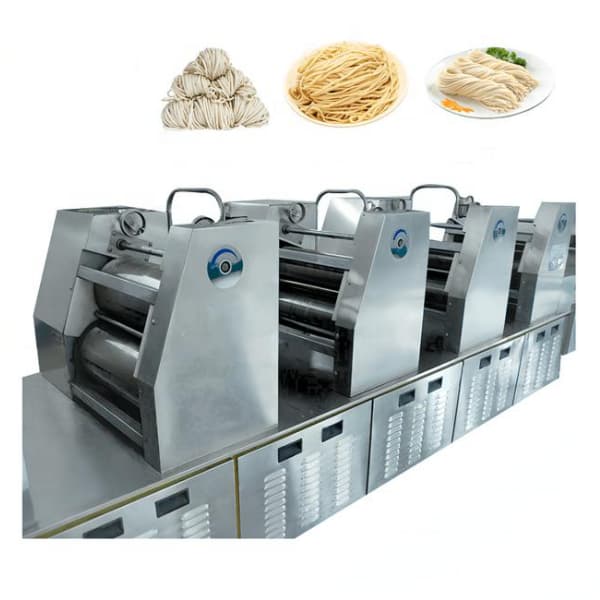Хэдэн арван жилийн өмнө, Раменыг баримталсан баримтууд дээр онцолсон RAMEN-ийг үзэх боломжгүй байсан, хоол тохирох, эсвэл дагалдах хүсэл эрмэлзэл бүхий сонирхогчдыг дагаж мөрддөг. Өнөөдөр хариулт, Рамен зөвхөн хайртай хоол биш харин соёлын үзэгдэл, Шүүмжлэгчдэд, Тарьчлэл, болон дэлхийн фен нийгэмлэгүүд.
Интернет ба хоолны газар даяар, Рамен дахь сонирхол хурдацтай өсч байна. Өдөр бүр жороор үерийн үер, хянах, техник нь үндсэндээ хэрэглэдэг хүмүүсийн үзэл бодлоос үүдэлтэй.
Гэсэн хэдий ч, Би өөр замаар явахыг хүсч байна. Рамен хоолны сургуулийн захирал шиг, Инженерээр олон арван жилийн турш инженер, Гоймонгийн машин үйлдвэрлэгч, Би Рамений мөн чанар, гарал үүслийг мэргэжлийн болон техникийн хэтийн төлөвөөс гаргахыг зорьж байна. Сар бүр, Би энэ өрсөлдөх чадвартай салбартаа Япон, Сингапурт сургуульд сурдаг.
Таван гол ойлголтоор RAMEN-ийн гүнзгий түүхийг судалцгаая.

1. Японы Рамен яагаад эртний Ланжоу Рамен хийсэн бэ??
Япон дахь Рамен нь нэг зуу гаруй настай, Ланжоу Рамен Раменыг хятадуудаас илүү ихээр сайрхдаг 4,000 жил. Бага үеэл нь Хятадын нэр хүндэд хүрч байсан бөгөөд энэ нь эртний олон янз байдал Хятадаас гадуур харьцангуй харагддаг.
Үүнд их гайхсан, Би Ланжоу руу аяллаа 2012 тэдний техникийг судлах. Сая гаруй оршин суугчтай, Ланжоу мянга мянган Рамен дэлгүүрүүдтэй, Мастер тогооч нар хаан ур чадвар, уламжлалын шоу нэвтрүүлгээр гоймоныг татдаг. Үйл явц нь соёлын өвийг дагаж мөрддөг, түлхэлт, ҮНЭГҮЙ ҮНЭГҮЙ ҮНЭГҮЙ ҮНЭГҮЙ ШИЛДЭГ АВЧ БАЙНА.
Хэдийгээр тууштай байдал, хадгалалтад гайхалтай байдаг, Энэ арга нь дэлгүүрээс дэлгүүр хэсэхэд бага зэрэг ялгаатай байдаг. Магадгүй энэ уламжлал ёсоор дагаж мөрдөхгүй байх нь яагаад Lanzhou Ramen-ийг өөрчлөх, дэлхийн амтанд дасан зохицох гэж байна.

2. Японы Рамен хятадын эсрэг талаасаа юу тусдаа байдаг вэ??
Сино-Японы дайны дараа, Хятадын хэв маягийн гоймон гоймон нь Японы хүнсний соёлд орж, Японд бүс нутгийн бүс нутагт хувьсан өөрчлөгдсөн. Японы Раменийг ялгахад чухал элемент нь ашиглах явдал юм мотодеал-Аралын амтлагчаар шөл тус бүрийг тус тусад нь шөл бүрт нэмж оруулав.
Soba Sauce-аас гаралтай "Каеши,"Мотодеаре Японы Рамен нарийн төвөгтэй байдлыг өгдөг, Шөлний гүнийг шар буурцагны соустай тэнцвэржүүлэх, Та хуурамч, эсвэл давс дээр суурилсан сүмс.
Эсрэгээрээ, Ланжоу шиг хятад раменийн шөл нь өдөр бүр олон удаа бясалгаж, үйлчилдэг, Хувилбар ба тохиргоог хязгаарлах. Японы Рамен нь захиалга тус бүрээр шинэхэн угсардаг, Хувьцааны зохицолоор бүтээсэн давхаргад амтыг хангах, сумс, ба үнэрт тос. Энэ бол амт, хэлбэрийн аль алинд нь хувьсан өөрчлөгдөх зориулалттай хоол юм.
3. Японы Рамен дэлхийн амжилтанд хэрхэн хүрэв?
Пицца эсвэл гамбургер шиг, Рамен олон улсын давж заалдах хоол хүнс болжээ. Энэ боломжтой юу?
Суши ашигтай харьцуулалтыг өгдөг. Энэ нь уламжлалт хэлбэрт ордоггүй, гэхдээ дасан зохицох замаар, Жишээлбэл, Калифорнийн өнхрөх бүтээл. Үүнд ижил, Рамений хатуу тодорхойлолт дутмаг нь үүнийг морфт ашиглах боломжийг олгодог, бусад хоолны дэглэмтэй гал хамгаалагч, болон бүс нутгийн давуу талыг тэврэх.
Японы Соба ба Удон, эсрэгээрээ, уламжлалт уламжлалт хязгаарлалтын улмаас илүү их нэмж үлд. Рамений нээлтэд нээлттэй байдал нь үүнийг хоолны бүтээл хийхэд зориулагдсан дэлхийн хэмжээний зурагт хүргэсэн.

4. Рамен Японд хэрхэн өөрчлөгдсөн бэ
Wwii дараа, Рамен Японд гарч ирэв., гоймон, болон энгийн toppings.
Дараа нь инновациас ирсэн Цукемен, гоймон нь илүү зузаан болж хувирдаг, илүү их хэмжээний соус, ба макага, шөлийг баяжуулсан гоймонтой гоймонтой. Эдгээр хөгжөөнүүд нь илүү хүчтэй амт, шинэ бүтэцтэй болох хүсэл эрмэлзлийг тусгасан.
Ramen шөл, Нэг удаа гахайн мах эсвэл тахианы махаар хязгаарлагддаг, Удалгүй далайн хоолыг өргөжүүлэв, хүнсний хүнсний хуурайц, мөн тэр ч байтугай цагаан хоолтон, бүтээлч тогооч. Рамен өөрчлөгдсөн шиг, Энэ нь зүгээр л хоол биш юм, гэхдээ бүс нутгийн таних, туршилтын тусгал юм.
5. Рамен дараа нь
Рамений ирээдүй нь үндсийг нь хүндэтгэж байхдаа өөрчлөлтийг тэврэх чадвартай байдаг. Тэнцвэргүй, Энэ нь эх хувь нь бараг ижил төстэй юм.
RAMEN-ийн ирээдүйг тодорхойлох түлхүүр чиг хандлага байна:
- Өөр гурил: Цавуулаггүй чиг хандлага нь будаагаар хийсэн гоймон дахь инновацийг түлхэж байна, Ноол гаруй эд, эсвэл эртний үр тариа.
- Шинэ шөлний эх сурвалжууд: Уламжлалт махны хувьцаа одоо далайн хоолоор нэгдэв, хүнсний хүнсний хуурайц, ба жимс жимсгэнэ, Олон янзын амтыг санал болгох.
- Дэлхийн motodare: Нэгэнт Японы найрлага дээр үндэслэсэн, Мотодеаре одоо Вьетнамын загасны соус, Баруун Умами upmami Sporters гэх мэт дэлхийн амтыг багтаасан болно.
- Үнэрт тос, өөх тос: Чиа үрийн тос, зая, Эсвэл самар нь Рамен ертөнцийг эрүүл мэндийн ухамсартай хооллоход хүргэдэг.
- Дээшлэх шинэчлэл: Siu Gork-ээс гадна, Тамхи татдаг махыг үзнэ гэж найдаж байна, бага температурын бэлтгэл, Эсвэл бүр түүхий эдлэл.
- Хариуцуулах илчилгээ: Урлагийн плация ба шинэ үйлчилгээний хэв маяг нь орчин үеийн Рамент интеграл болж хувирдаг, аяга бүрийг урсаж буй зураг болгон хувиргана.

Байгуулах: Раменийн философи
Рамений түүх бол гоймон, шөлний тухай биш юм. Энэ бол дасан зохицохоос төрсөн соёлын үзэгдэл юм, бүтээлч байдал, гар урлалын гүн хүндэтгэл. Ланжоу хотын гудамжнаас Токио, Нью-Йоркийн кафе нар, Рамен хил хязгаараас давсан байна.
Раменын сүнсийг амьд байлгахын тулд, Бид найрлагаас дамжуулан шинэлэг зүйл хийх ёстой, танилцуулга, эсвэл техник-хэзээ ч Раменийг хайрладаггүй юм: түүний сэтгэлийн дулаан гүн, тайвшрал, Энэ нь japer нь sllurp бүрийг авчирдаг.
